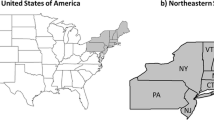Abstract
The sustainability implications of bioenergy development strategies are large and complex. Unlike conventional agriculture, bioenergy production provides an opportunity to design systems for improving eco-environmental services. Different places have different goals and solutions for bioenergy development, but they all should adhere to the sustainability requirements of the environment, economy, and society. This article serves as a brief overview of China’s bioenergy development and as an introduction to this special issue on the impacts of bioenergy development in China. The eleven articles in this special issue present a range of perspectives and scenario analyses on bioenergy production and its impacts as well as potential barriers to its development. Five general themes are covered: status and goals, biomass resources, energy plants, environmental impacts, and economic and social impacts. The potential for bioenergy production in China is huge, particularly in the central north and northwest. China plans to develop a bioenergy capacity of 30GW by 2020. However, realization of this goal will require breakthroughs in bioenergy landscape design, energy plant biotechnology, legislation, incentive policy, and conversion facilities. Our analyses suggest that (1) the linkage between bioenergy, environment, and economy are often circular rather than linear in nature; (2) sustainability is a core concept in bioenergy design and the ultimate goal of bioenergy development; and (3) each bioenergy development scheme must be region-specific and designed to solve local environmental and agricultural problems.
Similar content being viewed by others
References
Bao J (2008) An industrial demonstration of corn stover-based ethanol processing in China. The proceeding of China–US workshop on bioenergy consequences for global environmental change, pp 81–82
China Statistical Yearbook (2007) China Statistics Press
Dale VH (2008) Selecting metrics for sustainable bioenergy feedstocks. The proceeding of China–US workshop on bioenergy consequences for global environmental change, pp 49–53
English M (2008) Socioeconomic considerations with biofuels production. The proceeding of China–US workshop on bioenergy consequences for global environmental change, pp 42–44
Fu D-J, Huang H-W (2006) Brief introduction of exploitation and utilization of fuel plants resources. Journal of Wuhan Botanical Research 24:183–190
Fu C, Yu G-R (2010) An estimation and temporal and spatial pattern analysis of methane emissions from agriculture in China. Environmental Management. doi:10.1007/s00267-010-9495-1
Hu S, Mo X-G, Lin Z-H, Qiu J-X (2010) Emergy assessment of a wheat–maize rotation system with different water assignments in the North China Plain. Environmental Management. doi:10.1007/s00267-010-9543-x
Li S-Z, Chan-Halbrendt C (2009) Ethanol production in China: potential and technologies. Applied Energy 86:5162–5169
Li H-Q, Wang L-M, Shen L (2010a) Potential of CO2 emission reduction by developing non-grain based bio-ethanol in China. Environmental Management. doi:10.1007/s00267-090-9418-1
Li X-F, Su M, Yang M-F, Shen S-H, Jiang G-M, Qi D-M, Chen S-Y, Liu G-S (2010b) Major energy plants and their potential for bio-energy development in China. Environmental Management. doi:10.1007/s00267-010-9443-0
Lin C-S, Li Y-Y, Liu J-L, Zhu W-B, Chen X (2006) Diversity of energy plant resources and its prospects for the development and application. Henan Agricultural Sciences 12:17–23
Liu G-S, Gu W-B (2008) Advances in research on germplasm resources and molecular biology of the energy plants sweet sorghum. The proceeding of China–US workshop on bioenergy consequences for global environmental change, pp 47–48
Ma L-X, Shao HB, Wu G, Chu LY (2007) Resource evaluation of main oil plants and functional zone planning in China. In: Proceedings of the third international green energy conference, June 18–20, 2007, Sweden, pp 214–226
Moon HS, Abercrombie JM, Kausch AP, Stewart CN (2010) Sustainable use of biotechnology for bioenergy feedstocks. Environmental Management. doi:10.1007/s00267-010-9503-5
Mu D-Y, Seager T, Rao S-P, Zhao F (2010) Comparative streamlined life cycle assessment of lignocellulosic ethanol production: biochemical vs. thermochemical conversion. Environmental Management. doi:10.1007/s00267-010-9494-2
National Development and Reform Commission (NDRC) (2007) The Middle and Long Term Plan for Renewable Energy Development (in Chinese)
Seligsohn D, Bradley R (2009) Energy and climate policy action in China. World Resources Institute Fact Sheet, June 2009. http://pdf.wri.org/factsheets/factsheet_china_policy.pdf
Shen L, Liu L, Yao Z, Liu G, Lucas M (2010) Development potentials and policy options of biomass in China. Environmental Management. doi:10.1007/s00267-010-9476-4
Shui J-F, An Y, Ma Y-Q, Ichizen N (2010) Allelopathic potential of switchgrass (Panicum virgatum L.) on perennial perennial ryegrass (Lolium perenne L.) and alfalfa (Medicago sativa L.). Environmental Management. doi:10.1007/s00267-010-9454-x
Wu J-G, Meng X-Y, Liu X-M, Li W-W, Liu X-W, Xu D-Q, Sheng G-P, Yu H-Q (2010) Life cycle assessment of a wastewater treatment plant focused on material and energy flows. Environmental Management. doi:10.1007/s00267-010-9497-z
Xu B-C, Deng X-P, Zhang S-Q, Shan L (2010) Seedling biomass partition and water use efficiency of switchgrass and milkvetch under monoculture and mixture in response to various water availabilities. Environmental Management. doi:10.1007/s00267-010-9496-0
Yu G-R (2007) Status of bioenergy development in China: overview. The proceeding of China–US workshop on bioenergy production and sustainability: environmental aspects, pp 20–22
Zheng Z-M, Yu G-R, Sun X-M, Li S-G, Wang Y-S, Wang Y-H, Fu Y-L, Wang Q-F (2010) Spatio-temporal variability of soil respiration of forest ecosystems in China: influencing factors and evaluation model. Environmental Management. doi:10.1007/s00267-010-9509-z
Acknowledgments
This special issue is the outcome of a China-US joint workshop “Bioenergy Consequences for Global Environmental Change” held on October 15-17, 2008 in Beijing and organized by the China-US Joint Research Center for Ecosystem and Environmental Change (JRCEEC; http://jrceec.utk.edu). The workshop was jointly funded by the U.S. National Science Foundation (Grant Nos. NSF-OISE-0757267), the Natural Science Foundation of China (NSFC), and the Chinese Academy of Sciences.
Author information
Authors and Affiliations
Corresponding author
Rights and permissions
About this article
Cite this article
Zhuang, J., Gentry, R.W., Yu, GR. et al. Bioenergy Sustainability in China: Potential and Impacts. Environmental Management 46, 525–530 (2010). https://doi.org/10.1007/s00267-010-9555-6
Received:
Accepted:
Published:
Issue Date:
DOI: https://doi.org/10.1007/s00267-010-9555-6




